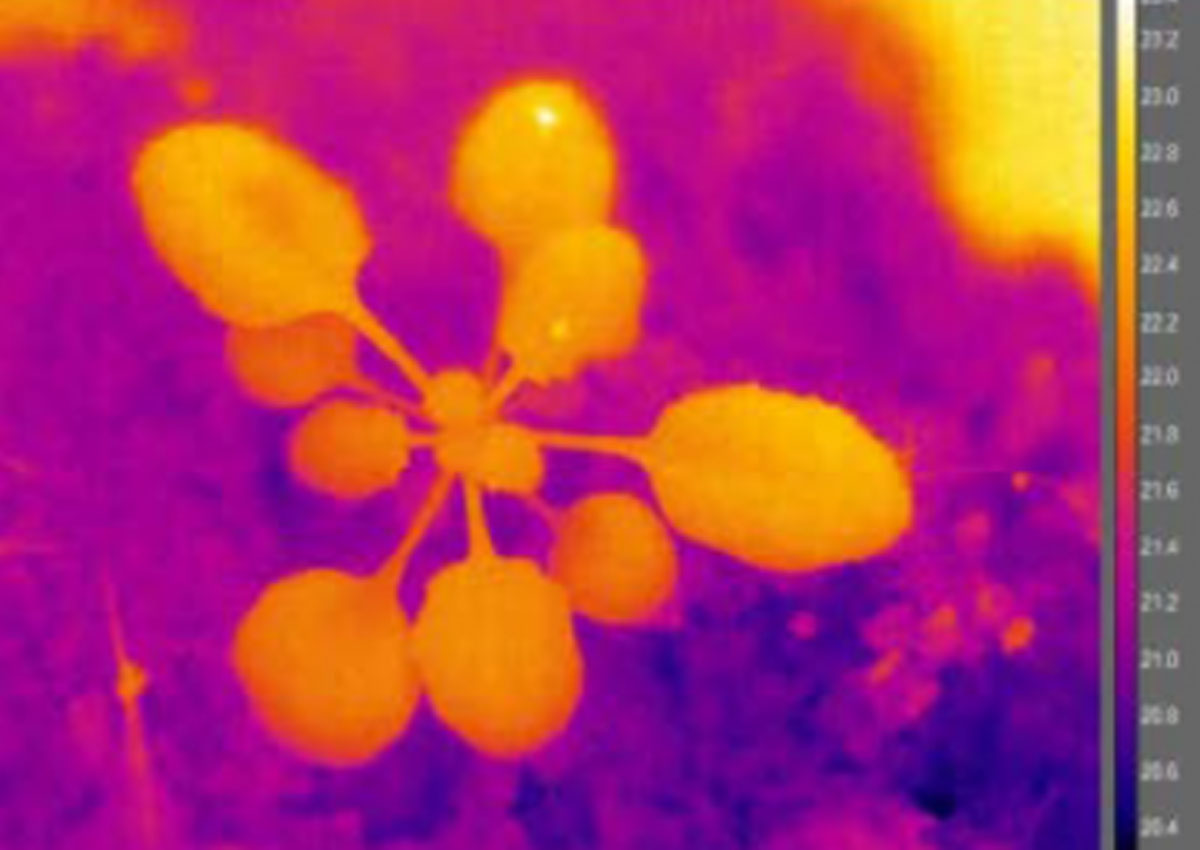
Utrecht Biologists Discover Mechanism for Plant Growth Under High Temperatures
November 27, 2019| |
Biologists from Utrecht University have discovered a new molecular mechanism that allows plants to optimize their growth under suboptimal high temperature conditions. This study offers promising leads for the development of climate warming-tolerant crops, which maintain a high yield under stressful high ambient temperatures.
Crops suffer high temperatures and each degree Celsius temperature increase can lead to up to 10 percent crop loss. However, many plant species can adjust the shape of their stems and leaves to be resilient to high temperatures. This process is called thermomorphogenesis and leads to an 'open body plan', which allows efficient evaporation, reduction of direct heat radiation from the sun, and enables dissipation of the heat by improved air circulation around leaves.
The researchers explain that the enzyme Histone Deacetylase 9 (HDA9) plays a key role in thermomorphogenesis in Arabidopsis thaliana. At increasing temperatures, the abundance of the enzyme rises, resulting in the removal of epigenetic modifications of DNA-bound Histone proteins that have an inhibiting effect on the synthesis of the well-known plant growth hormone auxin. As a result, auxin levels increase and the plant adjusts its stature. This mechanism shows that HDA9 has an indirect positive effect on transcription, while Histone Deacetylases are generally accepted as suppressors of this process.
For more details, read the news article in Utrecht University website.
| |
You might also like:
- Researchers Discover How Protein Connecting Calcium and Hormone Regulates Plant Growth
- Scientists Find Molecule for Boosting Plant Growth With Less Nitrogen
- Study Reveals How Climate Change Alters Plant Growth
Biotech Updates is a weekly newsletter of ISAAA, a not-for-profit organization. It is distributed for free to over 22,000 subscribers worldwide to inform them about the key developments in biosciences, especially in biotechnology. Your support will help us in our mission to feed the world with knowledge. You can help by donating as little as $10.
-
See more articles:
-
News from Around the World
- Science and She: Empowering Women in Science
- Scientists Develop "War Room" Simulations to Fight Crop Diseases
- Gene-editing Increases Sorghum's Protein Content
- PH Scientists Lead Discussions on Biotech Crops Safety with Food and Feed Industry
- Biotech Saves Lives, DOH Undersecretary Says
- Engineered Bacteria Produces BeeFree Honey
-
Research Highlights
- Research Team Discovers Gene for Iron Control in Plants
- Utrecht Biologists Discover Mechanism for Plant Growth Under High Temperatures
-
Plant
- Gene Editing of the Jasmonate Biosynthesis OsAOC Gene in Rice
- Study Pinpoints an NLR Gene that Confers Partial Resistance to Rice Blast Fungus
-
Read the latest: - Biotech Updates (November 12, 2025)
- Gene Editing Supplement (October 29, 2025)
- Gene Drive Supplement (February 22, 2023)
-
Subscribe to BU: - Share
- Tweet

